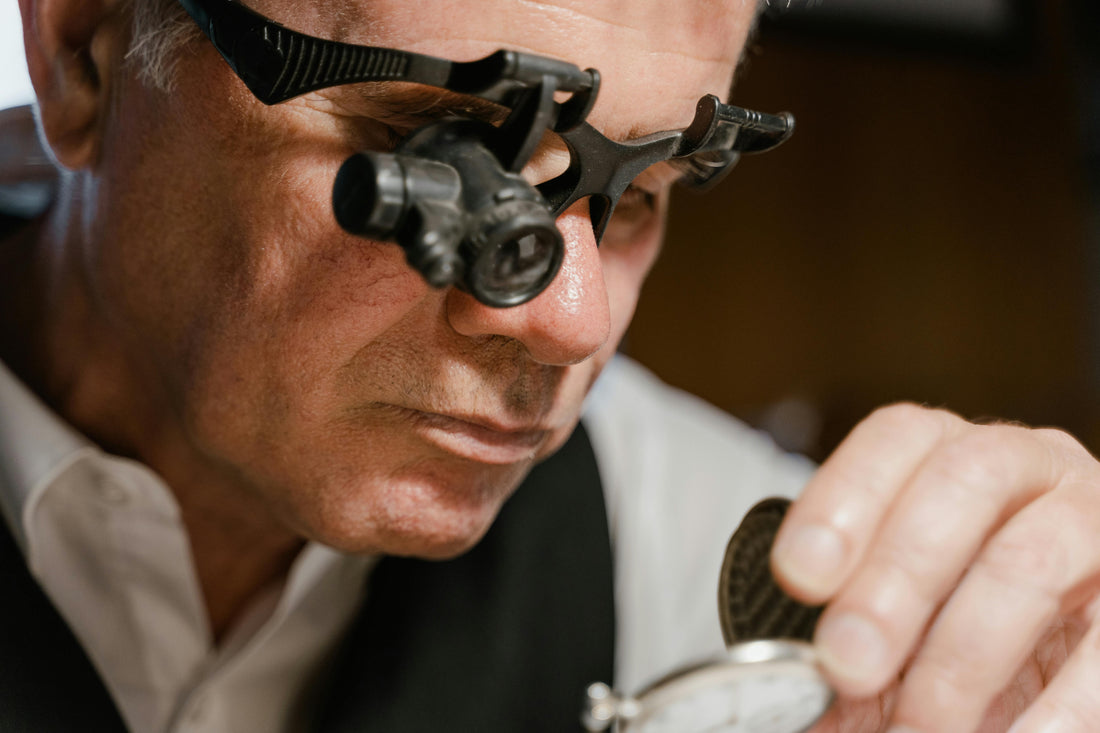
Authenticating Your Military Jewelry
Share
Military jewelry carries more than just metal and stones—it holds stories, sacrifices, and symbols of honor. Whether you’re a collector, a service member, or someone who cherishes military heritage, ensuring your piece is authentic means:
- Preserving History: Genuine pieces serve as tangible connections to pivotal moments and figures in military lore.
- Valuing Craftsmanship: Authentic items showcase the artistry and quality that stand the test of time.
- Avoiding Scams: The market’s flooded with replicas; knowing your stuff protects you from overpriced fakes.
Key Steps to Authenticate Military Jewelry
1. Conduct a Detailed Visual Inspection
Start with your eyes and a magnifying glass. Scrutinize every inch of the piece:
- Symbols and Insignias: Authentic military jewelry features precise and accurate representations of military emblems. Blurry or incorrect symbols? Major red flag.
- Hallmarks and Stamps: Look for purity marks like "925" for sterling silver or "14K" for gold. These indicate metal content and can hint at authenticity.
- Craftsmanship Quality: Military-issued items are crafted with precision. Uneven lines, shoddy engravings, or flimsy components? Probably a phony.
2. Research Its Historical Background
Knowledge is your best weapon. Dive into the history of the piece:
- Era and Origin: Does the design align with the time period it supposedly hails from? For instance, certain ring styles were prevalent during specific wars.
- Materials Used: Some eras favored particular metals or designs. Knowing these can help verify if the piece fits its claimed timeline.
- Production Techniques: Handcrafted details versus machine-made can indicate age and authenticity.
3. Seek Expert Opinions
When in doubt, call in the cavalry:
- Professional Appraisers: They can provide detailed insights into the piece’s authenticity and value.
- Military Historians: Experts in military artifacts can offer context and verification.
- Online Communities: Forums and groups dedicated to military memorabilia can be goldmines of information.
4. Verify Authenticity Documentation
If the piece comes with papers, scrutinize them:
- Certificates of Authenticity: Ensure they’re from reputable sources.
- Service Records: If the item is linked to a specific individual, cross-reference with military records if accessible.
Common Pitfalls and Red Flags
- Too Good to Be True Pricing: Authentic military jewelry holds significant value. Rock-bottom prices? Be skeptical.
- Inconsistent Stories: Sellers who can’t provide a clear provenance or backstory might be peddling fakes.
- Overly Polished Appearance: Genuine vintage pieces show age. If it looks too new, it might be.
Authenticating Jewelry
Owning authentic military jewelry is about more than just aesthetics; it’s about carrying forward a legacy of honor and bravery. By taking the time to authenticate your pieces, you ensure that you’re not only respecting the sacrifices they represent but also investing in artifacts that hold true historical significance.
So, next time you clasp that ring or fasten that medal, do it with the confidence that it’s as authentic as the valor it symbolizes.